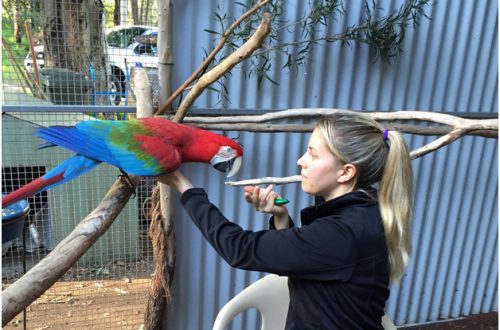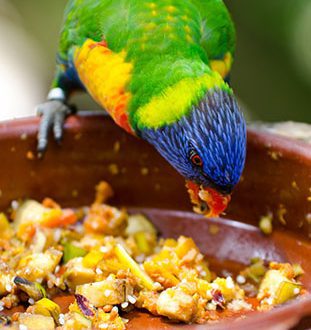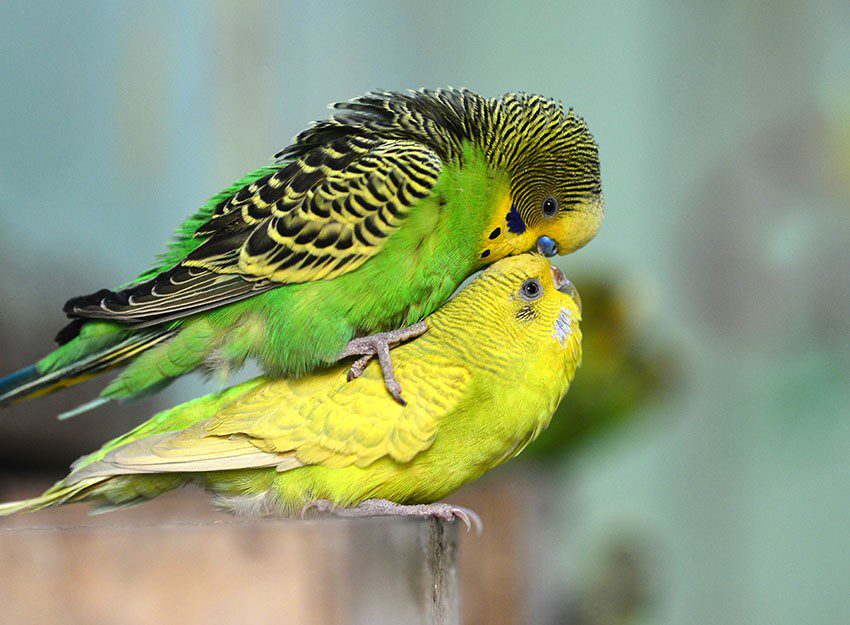
How to properly breed budgerigars
The emergence of a new bird life is a wonderful moment, but at the same time a very responsible one. If you are thinking about breeding parrots, then it is best to start this simple and at the same time difficult business with budgerigars.
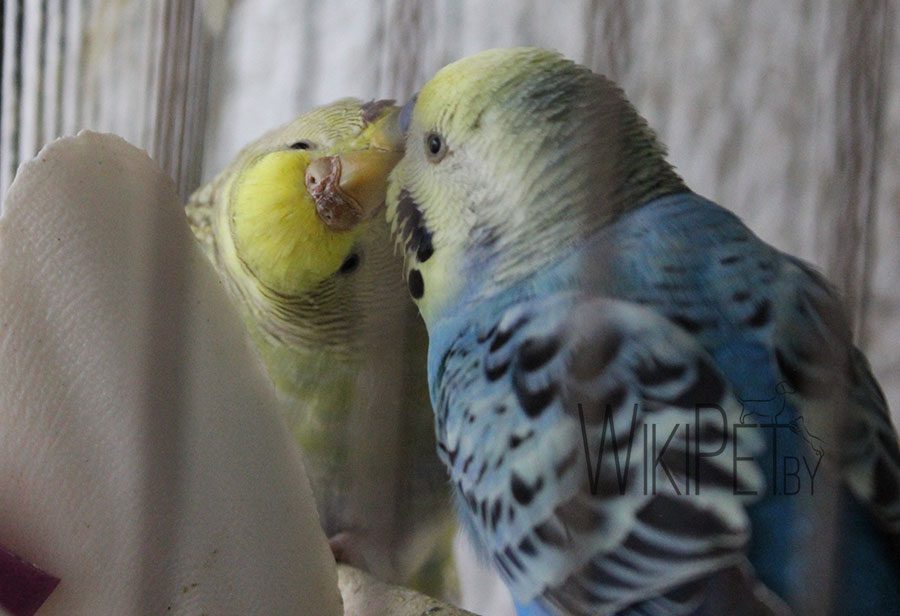
Before hanging a nest, be sure to read the literature, as at the most crucial moment you must be prepared for any emergency situations. Remember that nesting will take several months, at this time you can not make a lot of noise, make repairs, rearrange furniture, leave for a long time.
Contents
How to choose the right pair for breeding
The first thing you should know is the correct selection of a pair. Birds should be of different sexes … Perhaps this sounds obvious, but often the owners, not understanding the intricacies of determining sex, hang a nest for same-sex birds and expect chicks from them. The age of birds suitable for breeding should be from one year. This applies to females in the first place, since their reproductive system in captivity matures precisely at this age. Males may be ready a little earlier. Remember that an immature bird may have problems with laying eggs, it may lack parental instinct. The couple must be in good condition, without obesity and excessive thinness, healthy and molted. The breeding process will take several months and enormous energy costs for the body, because weakened birds can even die. It happened that the males fed the chicks and the female until they were completely exhausted, while they themselves ate almost nothing. Birds should not be relatives, since inbreeding may result in the appearance of weak chicks or the appearance of congenital pathologies in them.
Budgerigars are quite easy to breed at home. Also, having studied the basics of budgerigar genetics, you can choose a pair so that the chicks will turn out to be some special color.
So, you have chosen a couple, make sure that the birds are not aggressive towards each other, since nothing good will come of such breeding. You can let the birds choose a partner on their own, but, at the same time, all of the above conditions must be met. If the birds do not show sympathy for each other, but are not aggressive towards their partner, you can try to put them away from the flock in a separate cage. Perhaps, after some time, the pair will form.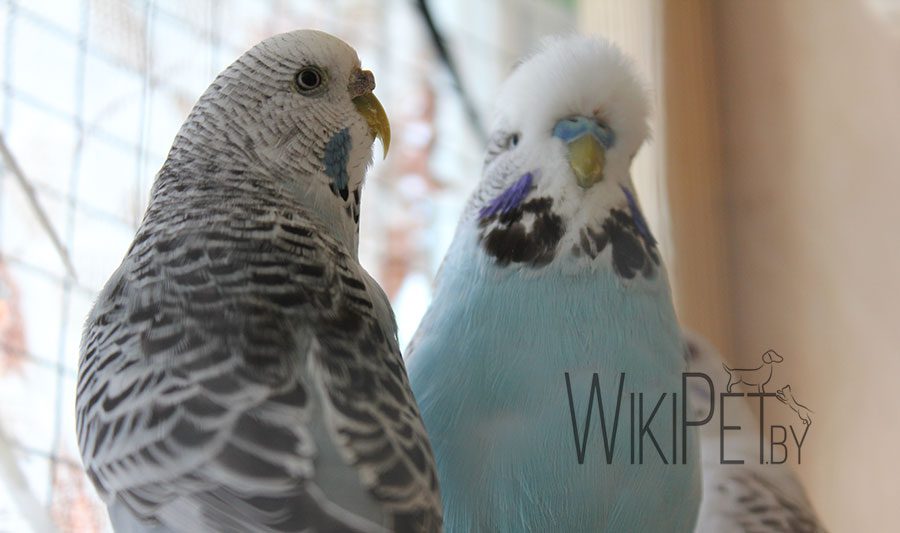
You can nest budgerigars at almost any time of the year, the main thing is to properly prepare the birds for this important event. Of course, in spring and late summer, when there are enough young greens, juicy fruits and vegetables, things will go faster, but you yourself can create such conditions at any time of the year.
We are preparing a cage for breeding. In addition to parents, potential chicks should fit in it, which can be up to 7 – 9 individuals. Therefore, the minimum dimensions of the cage should be 40 × 30 × 40 cm, ideally 60 × 30 × 40 cm. The larger the cage, the better. The cage should be in a well-lit place, not in a draft and further from heating appliances at human eye level. This is quite high, but this way the birds will feel safe and more likely to start breeding. Remove everything unnecessary from the cage, the birds should not be distracted by foreign objects. The cage must have strong and stable perches to support mating birds.
Feeding budgerigars during the breeding season
This is very important, since in nature the breeding season falls on a time when the bird’s diet is rich in various feeds in order to replenish the body’s energy costs for breeding chicks. At home, with a diet rich in animal protein foods, we “wake up” the reproductive system, make it work correctly and fully. 2 weeks before hanging the house, you need to gradually increase the daylight hours to 14 hours with the help of artificial lighting. The temperature in the room should be at least 15 degrees. It should not be very hot, because at high temperatures the embryos in the eggs may die.
In addition to light, diet is equally important. One grain mixture will not be enough. The diet should include animal proteins. Most often it is a mixture of boiled chicken or quail eggs, carrots and crackers. However, in order not to heavily burden the internal organs of parrots with this food, it is better to give this mixture every other day. It is also necessary to include germinated cereals in the diet, they are very rich in vitamins and microelements, which are so necessary during this period. It is necessary to germinate cereals and other seeds before the grains peck, because when the greenery already appears, all the useful substances go into growth and there are already few useful substances in the seed itself. When germinating, be careful not to give the birds soured grain or grain with mold. This can cause indigestion or poisoning. There must be sources of calcium in the cell – chalk, sepia, a mineral mixture. If birds ignore them, sprinkle these mixtures on wet food or add liquid calcium gluconate to them. Do not forget about the permitted fruits, vegetables, berries and herbs.
Nest site preparation
When all conditions are met, you can hang the house. It must be prepared in advance. We hang the house from the outside in the upper part of the cage, leaning it against the second door. The house can be horizontal with dimensions of 25x20x15 cm, vertical 20x20x25 cm or a compromise 22x20x20 cm, with a notch of 4,5 cm. Don’t forget about the ventilation holes.
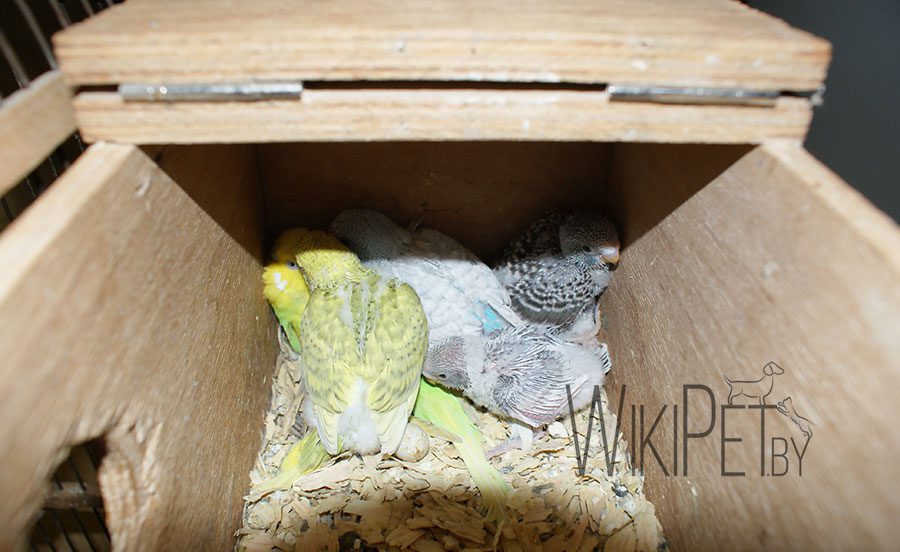
You can buy a house or make your own, using materials that are non-toxic to birds. The house should have a hole for laying so that the eggs always remain in one place. There should also be a perch outside. The house should not be very heavy, as it will need to be hung on a cage. Some hobbyists use natural nest boxes, but remember that wood can contain parasites that are dangerous for parrots and their chicks. The nest needs to be well handled, it is heavy and sometimes it is simply impossible to hang it on the cage, and it is also difficult to control what is happening inside it. We pour sawdust or shavings of hardwood into the house. The sawdust must be clean. Chamomile can be added to sawdust, it will scare away parasites and will help maintain a healthy microclimate in the nest. If the female at the first stages raked out all the sawdust from the nest, they can be poured. However, some females lay their eggs on a completely bare floor.
egg laying
The female budgerigar lays its first egg approximately 10 days after mating. Sometimes one mating is enough to fertilize the entire clutch. Before laying an egg, the female can sit with her tail down, trembling slightly, the litter can double in size. Carefully monitor the state of the female during this period, the laying of the first egg in some females can become problematic, sometimes they need human help.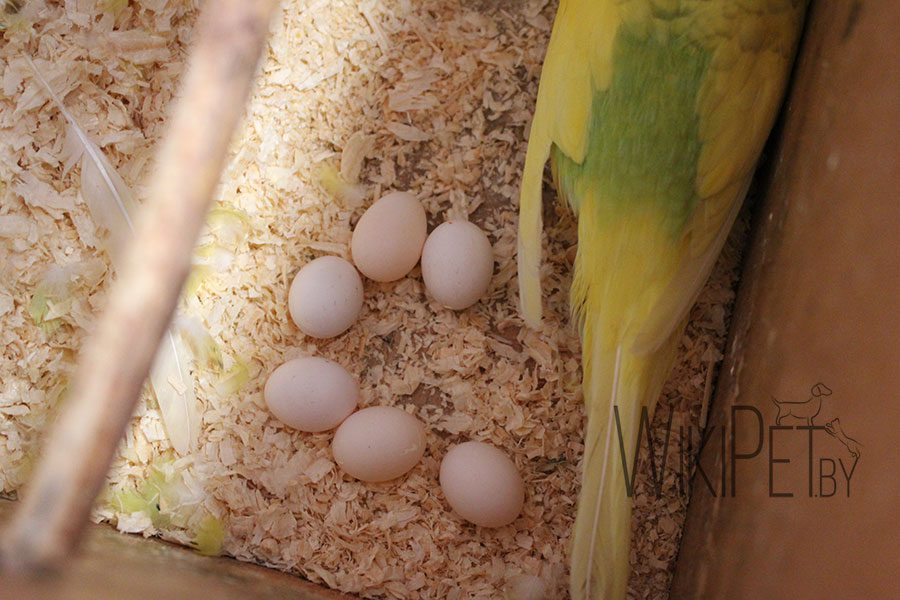
Then 1 egg per day is added, sometimes every other day, until 4 to 8 eggs are in the clutch. The female may begin to incubate not from the first egg, but from the second, and sometimes from the third egg. Do not worry, because until the female begins to incubate them, the embryos will not begin to develop and a chick will also hatch from the first egg. Only the female incubates the chicks, the male at this time gets food and regurgitates food for the female.
After the first egg is laid, we stop giving protein feed, leaving the grain mixture, germinated grain, fruits and vegetables. Greens are also better to limit, as it can weaken.
The appearance of chicks
On the 18th day of incubation, chicks are born. A quiet squeak will notify you of this significant event. The chicks hatch approximately every 2 days, blind, naked and completely helpless. All this time, the female warms the babies and almost does not leave the nest. Chicks gain weight very quickly.
After the appearance of the first chick, protein feed is returned to the diet. After the chicks are born, for a total of up to two weeks, the female feeds the chicks with goiter milk. Older chicks already get grain and protein feed.
The first cleaning in the nest is done depending on the number of chicks and the nervous state of the female. It is necessary to seize the moment when the female left the nest, to block her possibility of returning. Carefully transfer the chicks to a container with sawdust, quickly, so as not to disturb the female more than necessary, carry out a mechanical cleaning of the house. Pour fresh sawdust, return the chicks to their place. The next cleaning as the nesting area becomes dirty. During cleaning, it is necessary to inspect the paws of the chicks. If litter is stuck on them, then it must be soaked in a small amount of water to prevent deformation of the feet.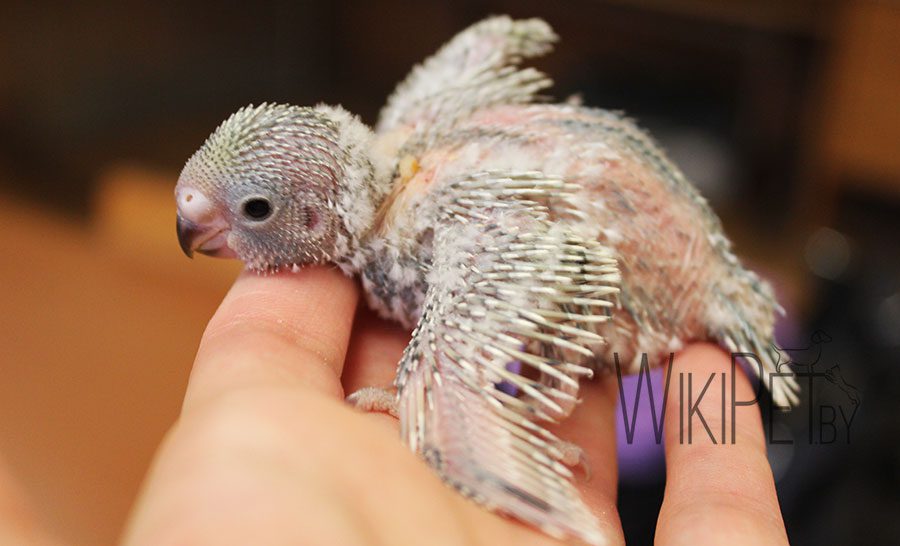
As soon as the strengthened chicks are able to eat on their own and leave the house, the female has a desire to quickly acquire new children, and sometimes she begins to mercilessly peck at the “older ones”. So it is better to plant young parrots. They usually leave the house 28 to 35 days after birth. Until about 38 – 42 days they are still fed by the male, but then they become completely independent.
Young chicks are fed the same as their parents during the breeding season for several weeks and ensure that they fully feed themselves. Subject to all these rules, your couple will soon delight you with the quiet squeak of chicks from the nest. Don’t be discouraged if the female doesn’t immediately go to the nest, sometimes it can take more than a month. Sometimes an inexperienced male does not always succeed in fertilizing a female, be patient with the birds, give them a chance. If all else fails, try again in a few months or change partners to birds, as budgerigars also experience partner incompatibility and infertility.
The female can be put on the second clutch, provided that there were no more than 5 chicks in the first one and the bird is in good shape.
As a rule, the second brood appears much earlier than the first, since the birds do not need time to “build up” the body, everything is already set up. If there were a lot of chicks, then the birds need a rest for at least six months.
What to do if there is a delay in laying eggs, read here




